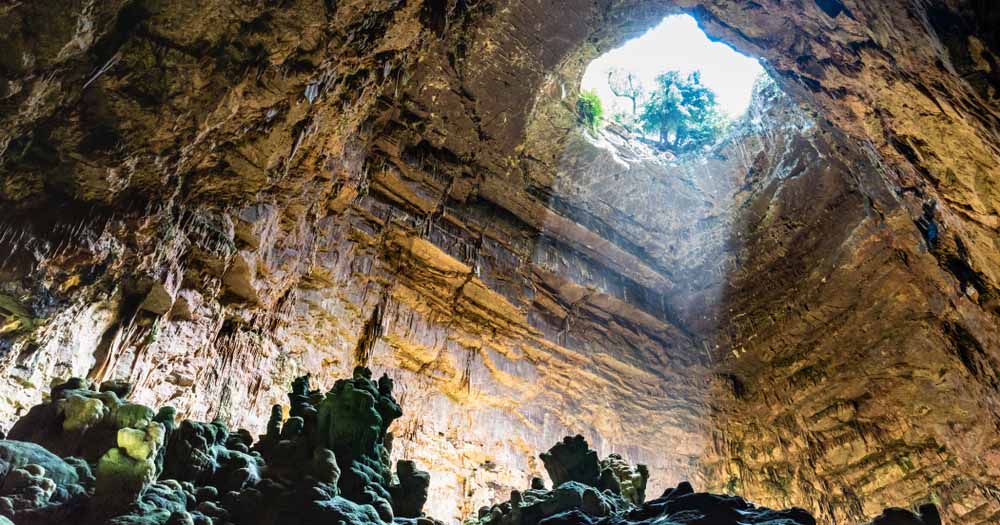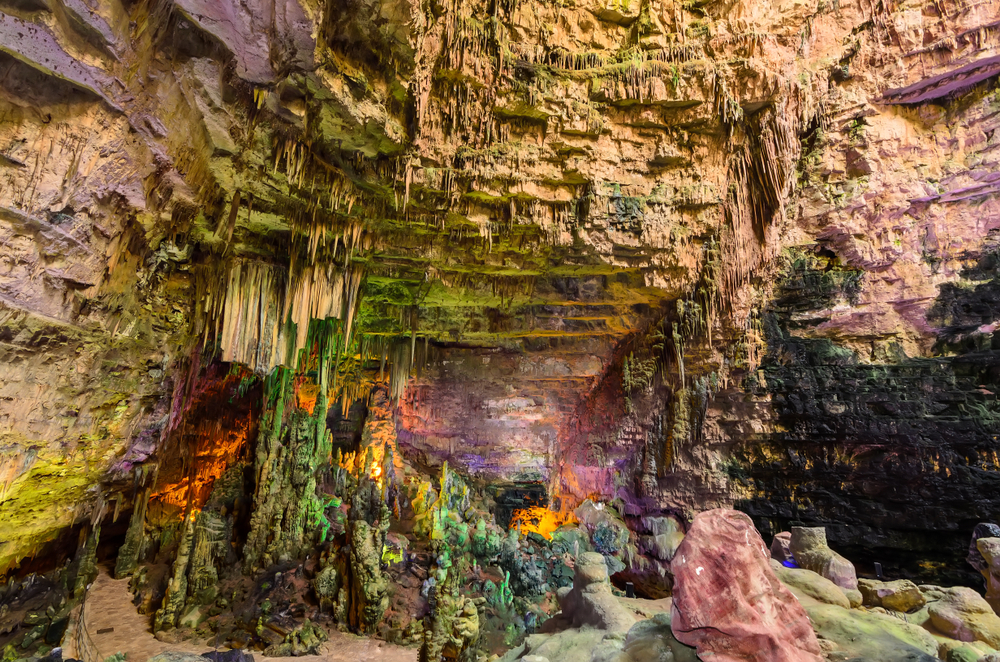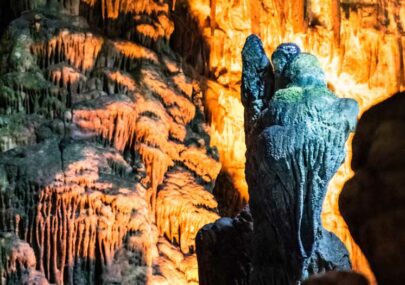
Discovering the caves of Castellana
Puglia is certainly renowned for its abundance of Romanesque cathedrals, picturesque white villages dotting the agricultural landscape, and captivating coastal towns, all contributing to its rich cultural and natural heritage.
Noteworthy among its attractions are the Castellana Caves, a breathtaking natural wonder set amidst a region also famed for landmarks like Alberobello with its trulli, the scenic Valle d’Itria, and the charming coastal cities of Monopoli and Polignano a Mare.
Discover the Hidden Wonders of the Castellana Caves
Contents
Explore the captivating subterranean realm of the Castellana Caves, where stunning stalactites and stalagmites have formed over thousands of years.
Meandering along a 3 km route, the guided tour offers an extraordinary exploration of the caves, delving over 70 meters deep. Visitors encounter captivating scenes of caverns adorned with whimsical names, canyons, profound chasms, fossils, stalactites, stalagmites, and formations of remarkable shapes and vivid colors, igniting the imagination of both children and adults.
An Intriguing and Enigmatic Past. The discovery
The unearthing of the Castellana Caves traces back to 1938, attributed to the exploration efforts of speleologist Franco Anelli, called by the Provincial Tourist Board of Bari to conduct an evaluation of existing caves in the vicinity to assess their suitability for tourism.
After exploring several caves in the area, which proved to be limited in extension and unsuitable for further exploration, Speleologist Franco Anelli arrived at the edge of the sinkhole known as “Grave” on January 23rd, 1938. Venturing into the depths of the first cave, he followed a sidewall and stumbled upon a small passage that led to a second cavern. This cavern was so vast that the light from Anelli’s acetylene lamp couldn’t illuminate its walls and ceiling, earning it the name “Cavern of Monuments.” Anelli returned two days later to continue his exploration.
On January 25th, 1938, Vito Matarrese, a courageous worker from Castellana, joined Anelli in exploring the “Grave.” Together, they ventured about 300 meters until they reached the end of a short descending tunnel, now known as the Serpent Corridor, facing a deep well.
Two months later, in March 1938, Anelli and Matarrese resumed their exploration, advancing up to 600 meters from the “Grave.” However, they encountered another deep chasm in the Corridor of the Desert, forcing them to halt their expedition once again.
During this period, Anelli also began mapping the caves, completing his initial survey in September of the same year during his third visit to Castellana.
After Anelli’s departure, Vito Matarrese continued the explorations, eventually overcoming the chasm in the Corridor of the Desert and reaching the final part of the karst system: the White Cave, which he discovered in 1939.
Since then, these caverns have unveiled a subterranean realm of unparalleled allure, emerging as a premier attraction in Puglia. Their narrative is woven with myths, folklore, and the scientific intrigue that spurred their exploration and examination.
Origins of Castellana Caves
The history of the Castellana Caves traces back to the upper Cretaceous period, around 100-90 million years ago, when Puglia was submerged beneath the ancient Mediterranean sea. During this time, abundant colonies of mollusks and marine plants inhabited the region.
Over millions of years, the remains of these organisms accumulated on the seabed, forming a massive deposit of mud and sand. Through gradual compression, this deposit transformed into a thick layer of limestone spanning several kilometers.
Around 65 million years ago, tectonic movements lifted the region above sea level, exposing the limestone formations. The rigid nature of limestone, coupled with the effects of tectonic activity, led to the formation of extensive cracks throughout the rock.
Intense rainfall further contributed to the cave formation process. As rainwater seeped into the ground, it created an underground aquifer that slowly dissolved the limestone and widened existing cracks. Over time, these cracks merged, creating larger chambers within the rock.
In areas where numerous cracks intersected, such as the “Grave” section of the Castellana Caves, repeated collapses occurred. These collapses widened the cave chambers toward the ceiling, gradually thinning the rock layer separating the cave from the surface. Eventually, this thin layer collapsed, allowing light to penetrate into the cave for the first time.
The formation of stalactites and stalagmites
The captivating allure of the Castellana Caves lies in its diverse array of dripstone formations. These formations adorn the cave walls with calcite deposits, gradually accumulated over time as rainwater seeps through the layers of rock above.
As water drips into the caverns, it deposits calcium carbonate on the ceiling or floor, fostering the growth of stalactites, formations that hang from above, and stalagmites, formations that rise from below. Over time, the gradual growth of these formations may lead to their merging and the creation of columns.
Apart from these typical formations, there are various other types of dripstones. Flowstones and curtains are created by flowing water, while coralloids and pond crystals form in underwater conditions. Helictites, which defy gravity, and cave pearls, layers of calcite forming around tiny rock grains, add to the diversity of formations found in the caves.
Beyond its geological significance, the Castellana Caves serve as a unique venue for special events, set in an incredibly evocative setting, being the fabulous frame to your unforgettable luxury tour.




Leave a Reply